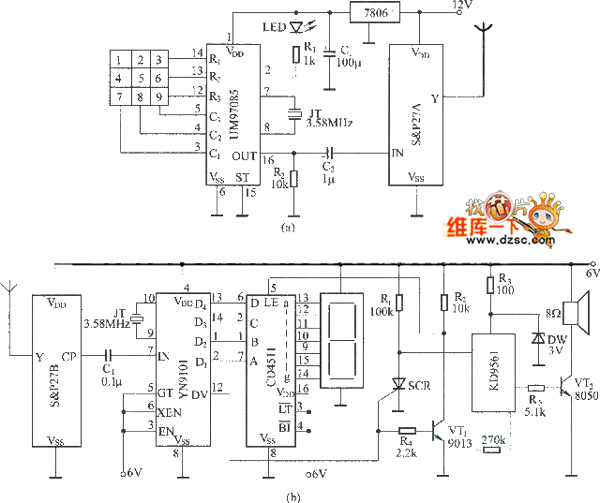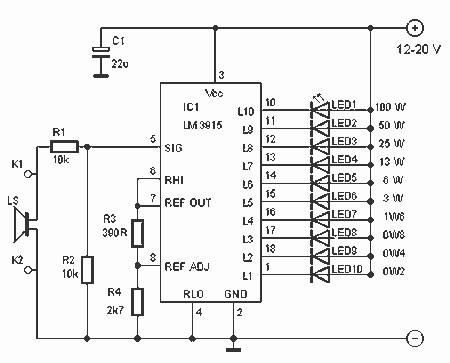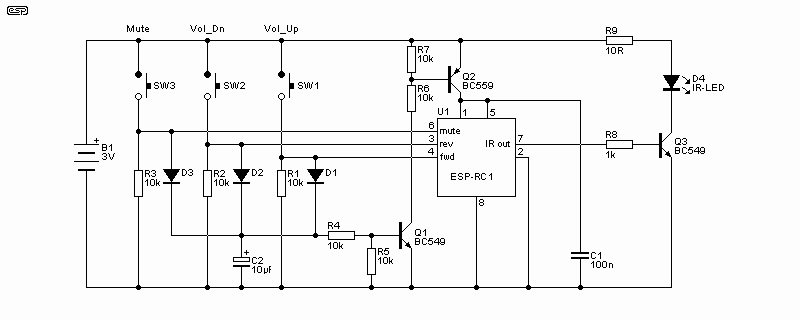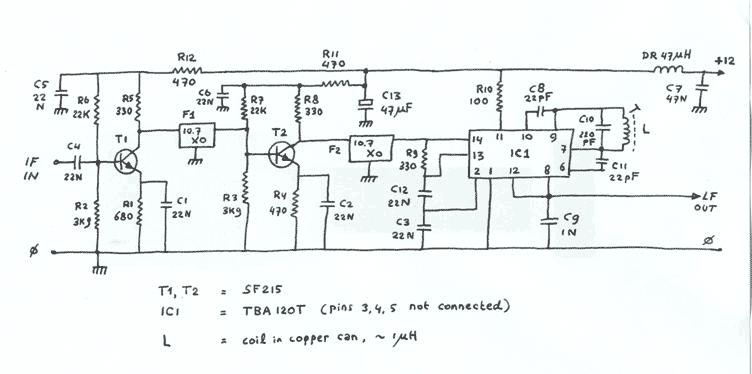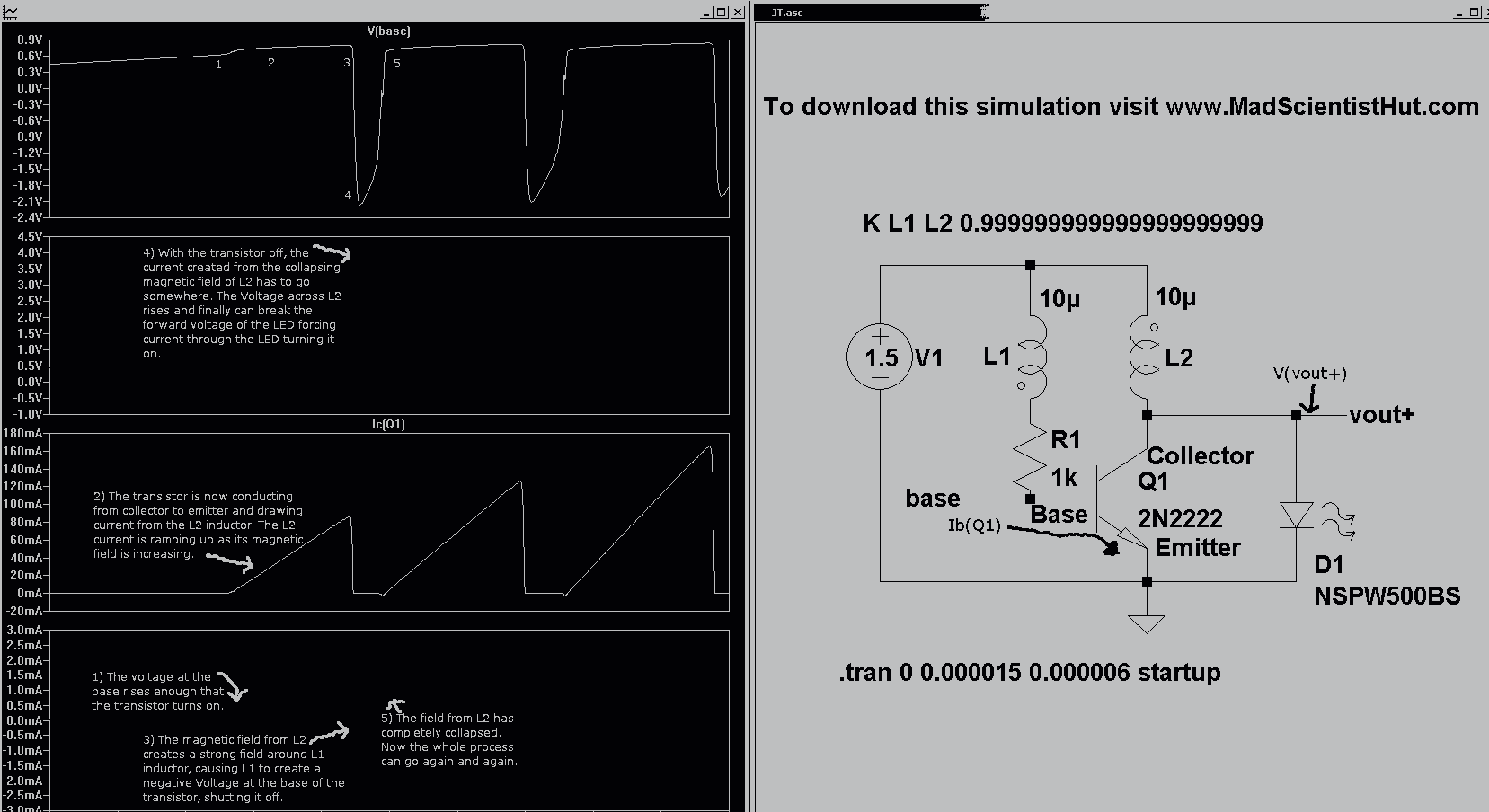
Stereo Tube Amplifier circuit
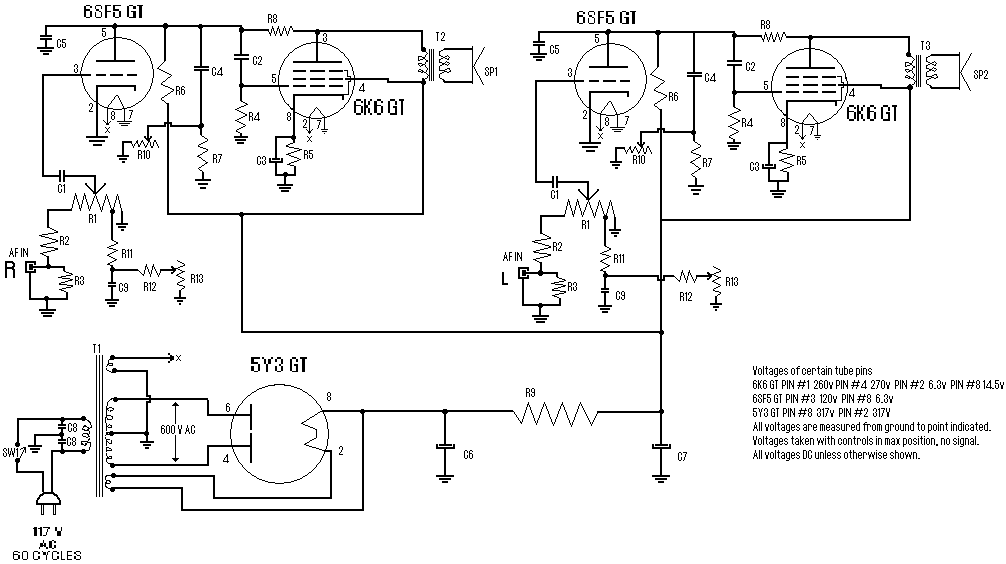
The circuit is straightforward yet capable of outstanding performance. It has been specifically designed as an amplifier for the digital sound card in a computer. Audio input can be sourced from any two-channel line-level device such as a television, CD player, or VCR. This tube-type amplifier utilizes a total of five tubes, with a maximum power consumption of approximately 45 Watts from the outlet. The circuit employs three types of tubes: one 5Y3 GT vacuum rectifier, two 6SF5 GT high-mu triodes, and two 6K6 power beam amplifiers. All tubes are full-size octal types, which are readily available today at a price range of $3 to $5 each.
The amplifier circuit is designed to enhance audio signals from various two-channel sources, making it versatile for home audio setups. The 5Y3 GT vacuum rectifier serves as the power supply component, converting AC voltage from the mains into the required DC voltage for the amplifier's operation. The two 6SF5 GT high-mu triodes are employed for voltage amplification, providing the necessary gain to boost audio signals to a suitable level for driving the output stage. The output stage consists of two 6K6 power beam amplifiers, which are responsible for delivering the amplified audio signal to the speakers.
The choice of using octal tubes is significant due to their availability and ease of replacement. The circuit's design ensures that the total power consumption remains efficient, making it suitable for prolonged use without excessive energy costs. The arrangement of the tubes within the circuit is crucial for achieving optimal performance, as it allows for effective signal processing and minimal distortion.
Overall, this tube amplifier circuit combines simplicity with effective audio amplification, making it an excellent choice for enhancing the audio experience of digital sound cards and other two-channel audio devices. Proper implementation and careful tuning of the circuit can lead to high-quality sound reproduction, characteristic of tube amplifiers.The circuit is simple, yet is capable of excellent performance. I designed it specifically for use as an amplifier for the digital sound card in my computer. Audio input can be from any two-channel line level device such as a television, CD player, or VCR. It is of the tube type, using only 5 tubes total with no more than about 45 Watts power consumption from the outlet. It uses 3 types of tube 1 5Y3 GT vacuum rectifier, 2 6SF5 GT high-mu triodes, and 2 6K6 power beam amplifiers.
These are all full-size octal type tubes which are commonly available today for between $3-5 each.. 🔗 External reference
The amplifier circuit is designed to enhance audio signals from various two-channel sources, making it versatile for home audio setups. The 5Y3 GT vacuum rectifier serves as the power supply component, converting AC voltage from the mains into the required DC voltage for the amplifier's operation. The two 6SF5 GT high-mu triodes are employed for voltage amplification, providing the necessary gain to boost audio signals to a suitable level for driving the output stage. The output stage consists of two 6K6 power beam amplifiers, which are responsible for delivering the amplified audio signal to the speakers.
The choice of using octal tubes is significant due to their availability and ease of replacement. The circuit's design ensures that the total power consumption remains efficient, making it suitable for prolonged use without excessive energy costs. The arrangement of the tubes within the circuit is crucial for achieving optimal performance, as it allows for effective signal processing and minimal distortion.
Overall, this tube amplifier circuit combines simplicity with effective audio amplification, making it an excellent choice for enhancing the audio experience of digital sound cards and other two-channel audio devices. Proper implementation and careful tuning of the circuit can lead to high-quality sound reproduction, characteristic of tube amplifiers.The circuit is simple, yet is capable of excellent performance. I designed it specifically for use as an amplifier for the digital sound card in my computer. Audio input can be from any two-channel line level device such as a television, CD player, or VCR. It is of the tube type, using only 5 tubes total with no more than about 45 Watts power consumption from the outlet. It uses 3 types of tube 1 5Y3 GT vacuum rectifier, 2 6SF5 GT high-mu triodes, and 2 6K6 power beam amplifiers.
These are all full-size octal type tubes which are commonly available today for between $3-5 each.. 🔗 External reference
